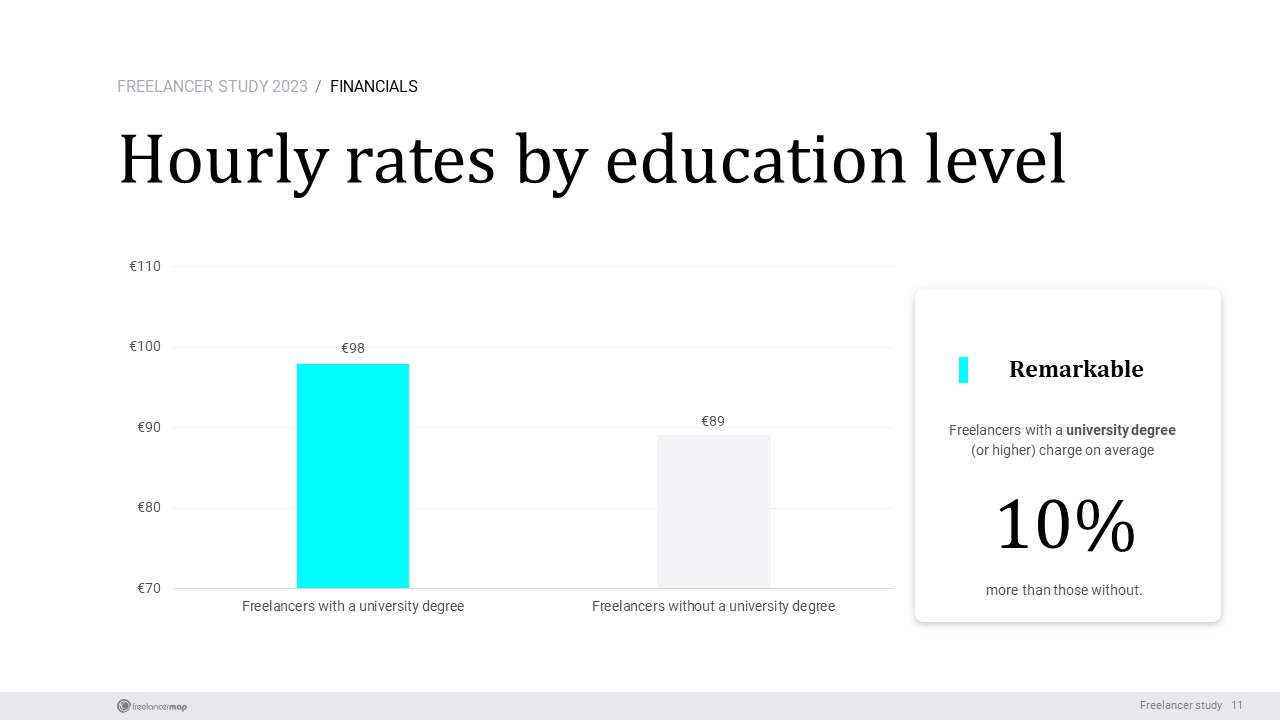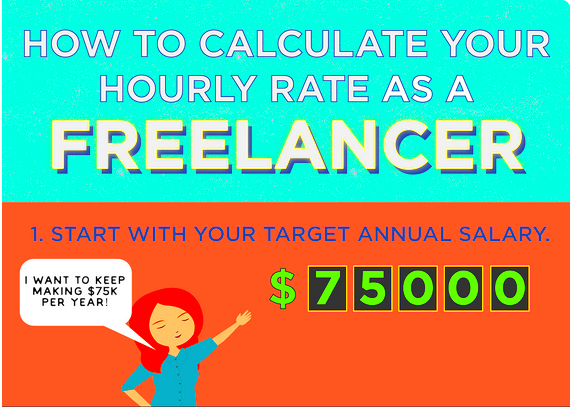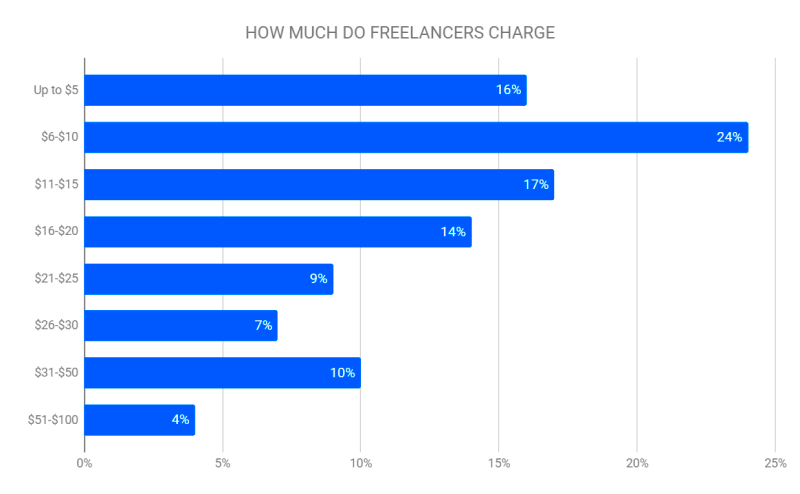Among the frequently asked questions about freelancing is whether one will always have to complain about how much they are charging. As a freelancer and client, getting the hourly rate set right is essential. It determines the quality of work produced, number of projects the freelancer can perform and eventually their basic needs. Knowledge of this will enable them to charge effectively for their services while ensuring that they are paid equitably according to amount of time spent as well as expertise needed in those services.
Factors Influencing Freelance Rates

When it comes to freelancing there are a lot of things that go into deciding how much to charge per hour. Some of these include:
- Experience Level: New freelancers may charge less to attract clients, while experienced professionals can command higher rates due to their proven track record.
- Skill Set: Specialized skills (like programming or graphic design) typically warrant higher rates compared to more general tasks (like data entry).
- Project Complexity: More complex projects that require advanced knowledge or creativity often come with a higher price tag.
- Client Type: Rates can vary depending on whether the client is a startup, a small business, or a large corporation.
- Location: Geographical location can affect rates, with freelancers in high-cost areas often charging more.
Also Read This: How to Create a Website Like Fiverr
Different Industries and Their Hourly Charges

Freelancers charge different rates across the various fields. The following are instances of typical fields and their average hourly fees:
| Industry | Average Hourly Rate |
|---|---|
| Web Development | $50 - $150 |
| Graphic Design | $30 - $100 |
| Content Writing | $20 - $100 |
| Digital Marketing | $40 - $120 |
| Consulting | $75 - $250 |
Clearly, the prices can vary widely. Freelancers need to study their industry’s benchmarks in order to be able to set competitive prices according to their abilities and experience.
Also Read This: Overall Earnings of Freelancers
How Experience Affects Freelance Pricing
Experience is the biggest determinant of a freelancer’s hourly charge. When freelancers become equipped with more skills and industry knowledge, they become more valuable to clients. It’s essential to know how experience influences pricing because this affects not only the amount freelancers charge but also how clients see them.
Below are important things to note about the experience and price setting for freelancers:
- Entry-Level Freelancers: Typically, those just starting may charge lower rates to build their portfolios and attract clients. It’s a strategy to gain experience and credibility.
- Mid-Level Freelancers: With a few years of experience, freelancers can begin to increase their rates. They usually have a portfolio of work and client testimonials that showcase their skills.
- Experienced Freelancers: Those with extensive experience and specialized skills can command much higher rates. Clients often prefer hiring freelancers who have a proven track record, even if it means paying more.
- Continued Education: Freelancers who invest in ongoing education and skills development can justify higher rates due to their up-to-date knowledge and expertise.
Freelancers must continuously reassess their rates to reflect their growing worth in the market as they become more seasoned.
Also Read This: Cost of a Freelance Visa in Dubai
Regional Differences in Freelance Rates
Freelancer charges can differ so much from one place to another. When it comes to fair rates, these distinctions are crucial for both freelancers and clients. A deeper look into the influence of place on fees is given below:
- High-Cost Areas: Cities like New York and San Francisco often have higher living costs, which means freelancers in these areas usually charge more to maintain their standard of living.
- Remote Work Trends: The rise of remote work has blurred geographical lines. Freelancers in lower-cost areas can sometimes charge rates comparable to those in higher-cost regions.
- Global Market: Clients hiring freelancers from different countries might find varying rates. For instance, freelancers in developing countries may charge less than their counterparts in developed nations, despite having similar skills.
Freelancers must carry out local price surveys, adjust their own per hour or project charges to fit geographical expectations of their target clients as well as keeping in mind what it takes to live.
Also Read This: How to Get Your First Order from Fiverr
How to Determine Your Own Hourly Rate
It can be a little nerve-wracking for you to choose your hourly price but, it is an important milestone in your career as a freelancer. The best rates are those that are well-planned because they ensure justice is enjoyed in terms of skills and time paid for. So here’s what you need to know so as to come up with an hourly fee:
Think about it this way:
- Calculate Your Expenses: Determine your monthly expenses, including rent, utilities, and any tools or software you need for your work. This will give you a baseline of how much you need to earn.
- Desired Income: Think about how much money you want to make annually. Factor in taxes and benefits that employees typically receive.
- Available Hours: Consider how many hours you can realistically work each week. Remember that not all your hours will be billable (time spent on marketing, admin tasks, etc.).
- Research Market Rates: Look at what others in your industry and area are charging. This will help you align your rates with the market.
- Adjust for Experience: If you have more experience or specialized skills, consider increasing your rate to reflect your value.
If you have the details, working out your hourly rate is easy. A simple formula will do:
Hourly Rate = (Desired Annual Income + Expenses) / Billable Hours per Year
By this methodology, you will be able to have a charge that appears justified as well as mirrors your knowledge. Keep in mind that it is proper to change your charges after some time if you become more competent and experienced.
Also Read This: What is Image Sourcing in Fiverr?
Common Mistakes When Setting Freelance Rates
Determining a suitable rate for freelance work can be confusing, and a lot of freelancers end up making decisions that affect them negatively. Learning about these frequent errors will save you from falling victim to them as well as ensuring you get the money you are actually deserving. Thus below are some typical mistakes freelances do when they are setting up rates:
- Undervaluing Your Skills: Many freelancers, especially those starting out, tend to undervalue their work. Remember, you bring unique skills and experience to the table. Don’t be afraid to charge what you’re worth.
- Not Considering All Expenses: Some freelancers forget to factor in expenses like software, taxes, or healthcare. It’s essential to consider all costs to ensure you’re not operating at a loss.
- Setting Rates Based on Competitors: While it’s good to be aware of what others are charging, blindly following competitors can lead you astray. Your skills, experience, and the value you offer are unique.
- Being Too Inflexible: While it’s important to set a rate you’re comfortable with, being too rigid can turn away potential clients. Be open to negotiation within reason, especially for long-term projects.
- Failing to Reassess Rates: As you gain experience and skills, you should revisit your rates regularly. Sticking with old rates can hold you back from earning your true value.
In mindful of this errors, you are able to take informed decisions on your freelance prices thus leading to a more sustainable profession.
Also Read This: Steps to Starting a Career as a Freelance React Developer
Conclusion on Freelance Hourly Charges
Freelancing hourly fee determination is really challenging and critical in your starting career path. It signifies not just how skilled or experienced you are, but also the worth of services that you offer to clients. By taking into account the factors such as level of experience, industry rates, differences in localities, all these could help you come up with an appealing rate which would make sure that you get paid fairly for everything that you do and at the same time attract customers. Don’t forget that this business is quite a moving target so it follows that one should constantly check their fees against what they offer in order to be relevant and up to date.
One thing that should be taken into account is the impact of self-assurance on pricing. If you trust what you are selling, it is highly possible that customers will also have a similar perspective. Keep yourself updated, receptive to criticism, and modify your prices accordingly. If done rightly, this can lead to a functionally beneficial independent profession which will help meet the financial targets set by an individual.
FAQs About Freelance Hourly Rates
These FAQs regarding freelance hour rates can furnish more understanding:
- What should I do if a client thinks my rates are too high?Explain the value you bring to the project. Highlight your experience, skills, and the quality of work they can expect. Be open to discussion but stay firm on your worth.
- How often should I raise my rates?It’s a good practice to reassess your rates every 6 to 12 months, especially if you’ve gained more experience, taken on new skills, or your workload has increased.
- Is it better to charge hourly or per project?It depends on the nature of the work. For long-term or complex projects, a flat rate may be more suitable, while hourly rates work well for tasks that are harder to estimate in terms of time.
- What if I’m just starting out and have no experience?It’s okay to start with lower rates to attract clients and build your portfolio. Just make sure to gradually increase your rates as you gain more experience and confidence.
These frequently asked questions will assist you in understanding the intricacies of fixing your fees as a freelancer thus enabling you to choose appropriately in the course of your freelancing life.




